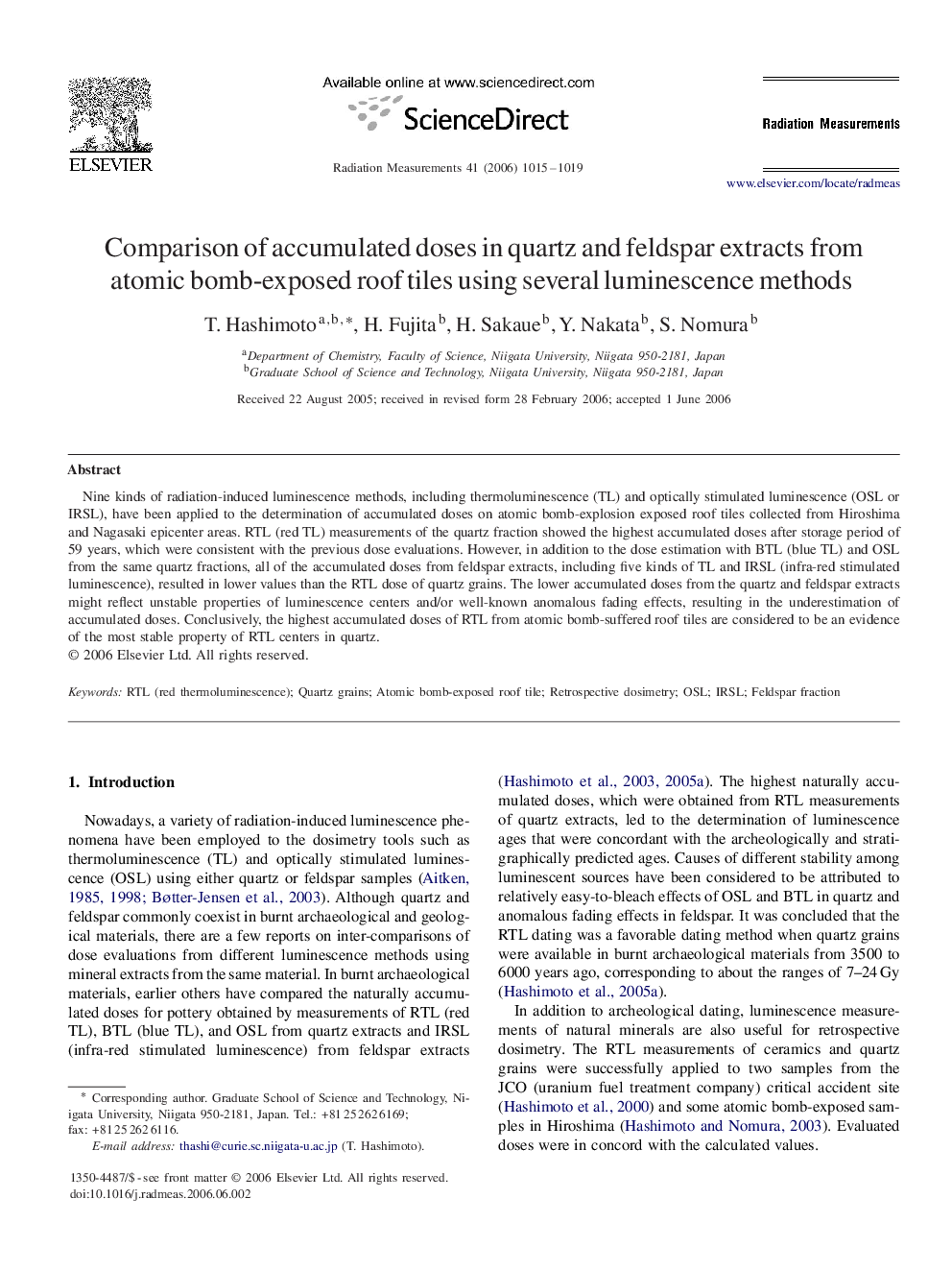| Article ID | Journal | Published Year | Pages | File Type |
|---|---|---|---|---|
| 1881380 | Radiation Measurements | 2006 | 5 Pages |
Abstract
Nine kinds of radiation-induced luminescence methods, including thermoluminescence (TL) and optically stimulated luminescence (OSL or IRSL), have been applied to the determination of accumulated doses on atomic bomb-explosion exposed roof tiles collected from Hiroshima and Nagasaki epicenter areas. RTL (red TL) measurements of the quartz fraction showed the highest accumulated doses after storage period of 59 years, which were consistent with the previous dose evaluations. However, in addition to the dose estimation with BTL (blue TL) and OSL from the same quartz fractions, all of the accumulated doses from feldspar extracts, including five kinds of TL and IRSL (infra-red stimulated luminescence), resulted in lower values than the RTL dose of quartz grains. The lower accumulated doses from the quartz and feldspar extracts might reflect unstable properties of luminescence centers and/or well-known anomalous fading effects, resulting in the underestimation of accumulated doses. Conclusively, the highest accumulated doses of RTL from atomic bomb-suffered roof tiles are considered to be an evidence of the most stable property of RTL centers in quartz.
Related Topics
Physical Sciences and Engineering
Physics and Astronomy
Radiation
Authors
T. Hashimoto, H. Fujita, H. Sakaue, Y. Nakata, S. Nomura,
